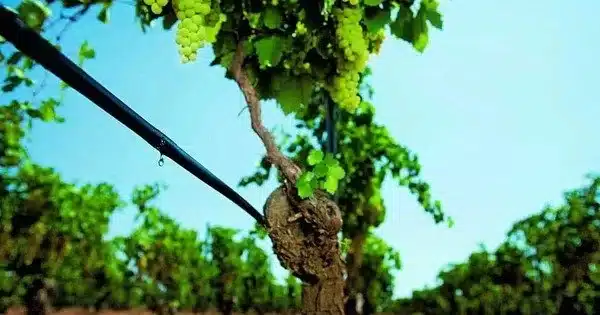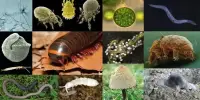Irrigation is critical in viticulture, or the growth of grapes for wine production. Irrigation in viticulture is the technique of supplying extra water to grapevine cultivation. It is both controversial and necessary in the winemaking process. The amount of available water in the grapevine impacts photosynthesis and thus growth, as well as the development of grape fruit. While environment and humidity are crucial factors, a normal grape vine requires 25-35 inches (635-890 millimeters) of water each year to minimize stress throughout the spring and summer months of the growing season.
Proper irrigation management can have a substantial impact on grapevine health, productivity, and grape quality. A vine that does not receive enough water will change its growth in a variety of ways; some consequences of water stress (especially lower berry size and somewhat greater sugar content) are desired by wine grape growers.
Here are some key aspects of irrigation in viticulture:
- Water Management: Water management is critical in viticulture to ensure that grapevines receive the appropriate amount of water at the appropriate time. This includes keeping track of soil moisture levels, weather conditions, and grapevine water requirements.
- Drip Irrigation: Drip irrigation is a frequent practice in vineyards. Water is delivered directly to the root zone of the grapevines via a network of tubes and emitters. Because it keeps the grapevine leaf dry, this strategy decreases water waste and the risk of disease.
- Timing: Irrigation must be done at the right time. Grapevines often demand extra water at certain periods of growth, such as bud break, blooming, and fruit set. Excessive irrigation during the ripening stage, on the other hand, might dilute grape aromas and result in larger, less concentrated berries.
- Soil Types: Soil type affects the irrigation strategy. Sandy soils drain quickly and may require more frequent irrigation, while clay soils retain moisture longer and may need less frequent watering.
- Water Quality: Water quality is crucial, as poor-quality water can harm grapevines and affect wine quality. High levels of salts, alkalinity, or contaminants can be problematic. Regular water testing is essential to ensure the water is suitable for irrigation.
- Irrigation Systems: Besides drip irrigation, other systems like overhead sprinklers or furrow irrigation are used in viticulture, although they are less common due to their potential for disease spread and water wastage.
- Rainfall Considerations: Vineyards in regions with reliable rainfall may rely less on irrigation, while those in arid or semi-arid climates often require more irrigation. Rainfall and weather patterns should be considered when planning irrigation schedules.
Water efficiency and conservation are frequently prioritized in sustainable viticulture methods. To lessen their environmental impact, several wineries are implementing sustainable irrigation systems. Natural rainfall is regarded as the only source of water in many Old World wine regions that will allow the vineyard to retain its terroir qualities. Some opponents regard irrigation as unnecessarily manipulative, with the potential for negative wine quality due to large yields that can be artificially enhanced by irrigation.
In conclusion, irrigation is an important technique in viticulture for regulating grapevine health and quality. The aim is to establish a balance between supplying enough water to maintain vine growth and grape production while avoiding over-irrigation, which can lead to grape quality and sustainability difficulties. Successful irrigation management necessitates a thorough grasp of the vineyard’s individual demands, geography, and grape varietals cultivated.













